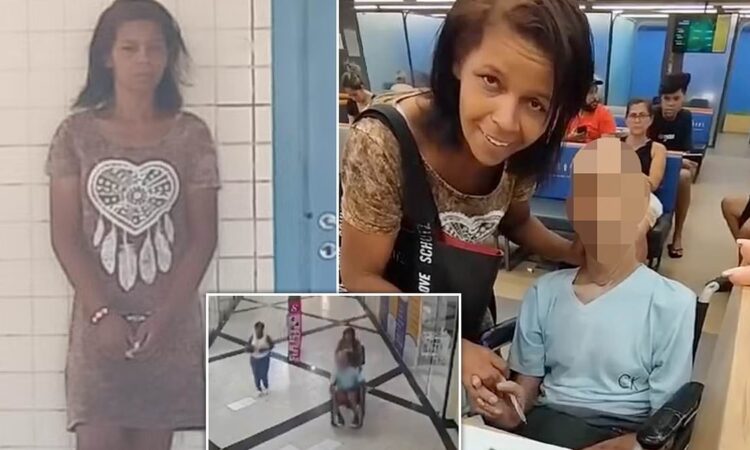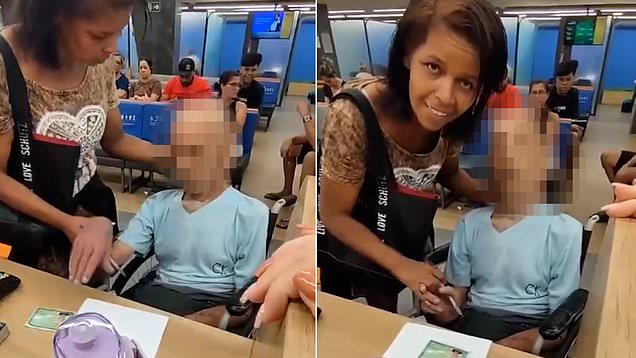Woman who wheeled corpse into bank trying to withdraw money from their account is seen in handcuffs

The woman accused of wheeling a dead man into a Brazilian bank has been spotted in handcuffs as cops hunt for the driver who brought them to the mall.
New details have been released in the bizarre incident that took place in the Rio de Janeiro neighborhood of Bangu on Tuesday when Erika de Souza, 42, pushed the corpse of Roberto Braga, 68, to a teller’s desk and tried to take out 17,000 reais (about $3,200).
Employees at the bank branch became concerned with de Souza’s actions while she tried to get a lifeless Braga to sign a document and called the police, who arrested her on the scene.
Rio de Janeiro Civil Police chief Fábio Souza told Brazilian news outlet G1 on Wednesday that while he could not exactly provide the moment that Braga died, cadaver spots that were visible on the back of his head indicate that he would have been dead for about two hours.
That comes as new footage has been unearthed showing Erika pushing around the corpse in the mall before wheeling in to the bank.

Had Roberto died while he was sitting in the wheelchair, the cadaver patches would have been located on his legs, authorities said.
‘It is not possible to say the exact moment of death,’ Souza said. ‘It was found by Samu (Mobile Emergency Attendance Service) that there was (livor mortis). This only happens from the moment of death, but is only noticeable around two hours after death.’
Souza said that agents were deployed to search for the rideshare app driver who dropped off de Souza with her dead uncle at the bank.
De Souza, who is facing attempted theft by fraud and vilification of a corpse charges, was interviewed Wednesday morning by authorities.
She told cops that Braga had died while sitting in the wheelchair at the bank, a claim that police are disputing.
‘In my 22-year career I have never seen a story like this,’ Souza said.
Customers and workers at the bank initially thought Braga was sick, the police chief indicated, before they called for ambulance. A viral video recorded by a bank staffer showed de Souza holding up Braga’s head and telling him, ‘Uncle, are you listening? You have to sign it. I can’t sign for you.’
One of the bank workers then told de Souza, ‘I don’t think this is legal. He doesn’t look well. He’s very pale.’
‘He’s like that,’ she replied and told her dead uncle, ‘If you’re not well, I can take you to hospital. Do you want to go back to hospital again?’
De Souza then told Braga, ‘Sign so you don’t give me any more headaches, I can’t take it anymore.’
Souza are also looking into whether de Souza is related to Braga.
‘She calls herself his niece. In fact, she has a degree of kinship, according to our research,’ he said. ‘And she calls herself his caretaker. We want to identify other family members.’





